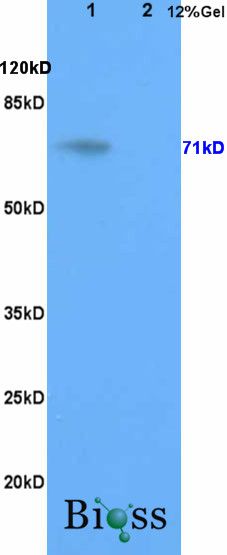Sample:
Brain (Rat) Lysate at 40 ug
Liver (Rat) Lysate at 40 ug
Primary: Anti-Galactocerebroside (SL4691R) at 1/300 dilution
Secondary: HRP conjugated Goat-Anti-rabbit IgG (SL0295G-HRP) at 1/5000 dilution
Predicted band size: 71 kD
Observed band size: 71 kD
